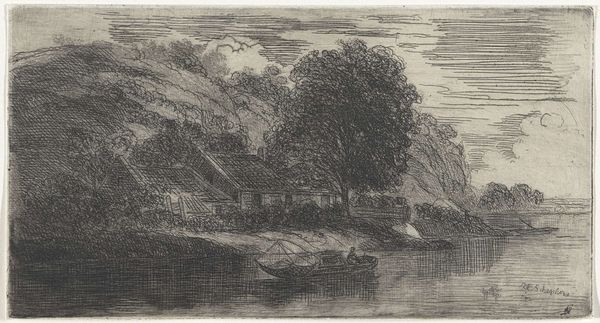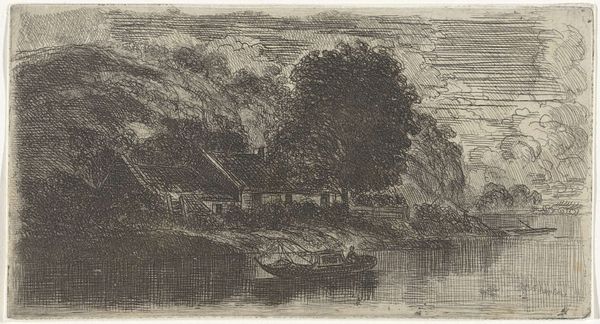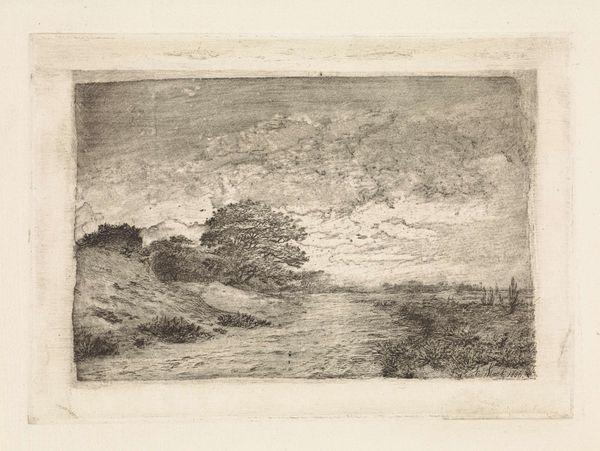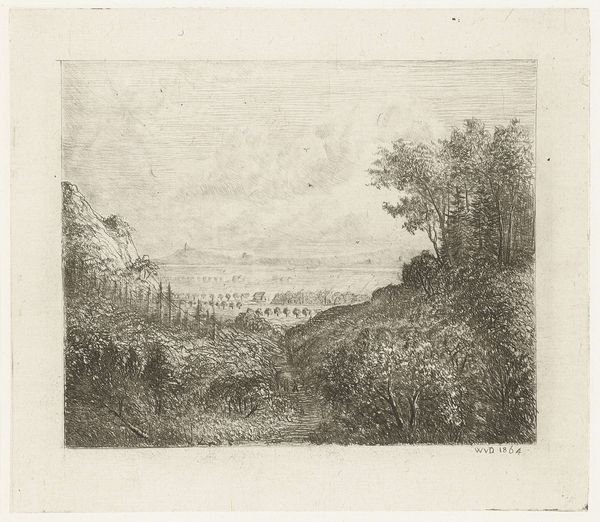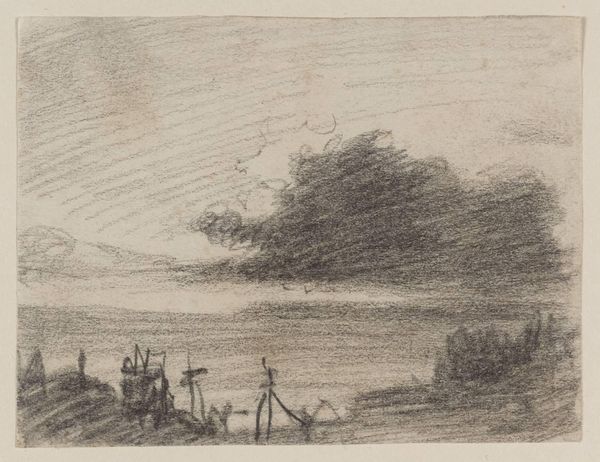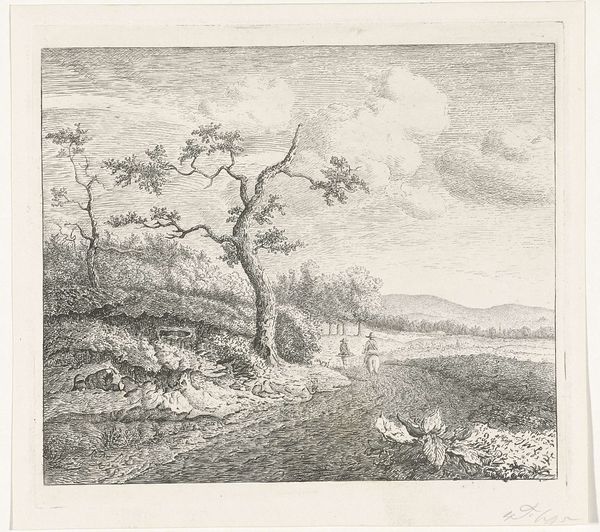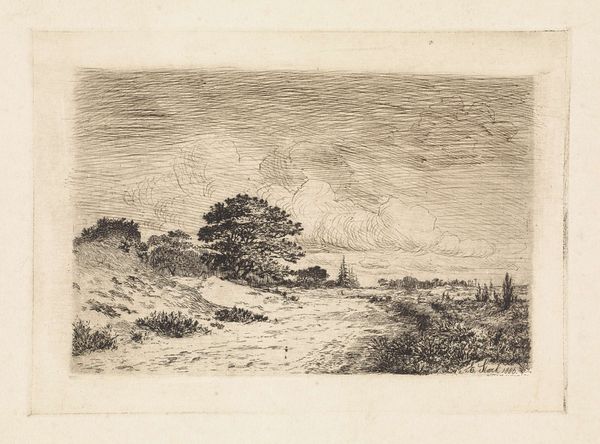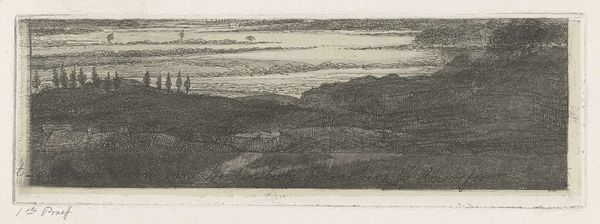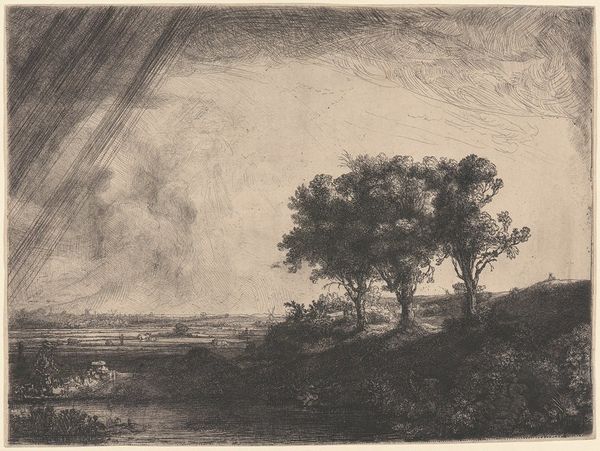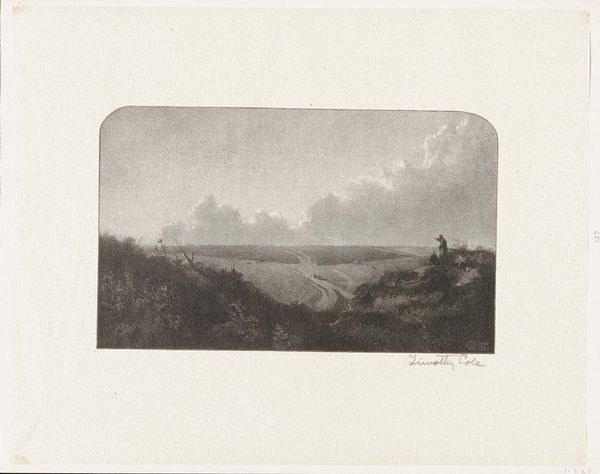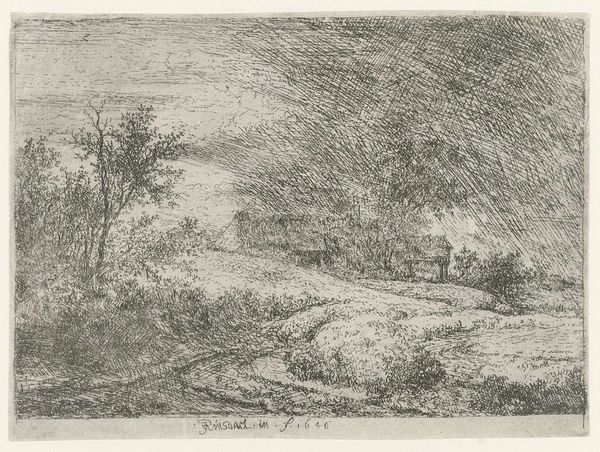
drawing, etching, pencil
#
pencil drawn
#
drawing
#
etching
#
pencil sketch
#
landscape
#
etching
#
figuration
#
pencil drawing
#
romanticism
#
pencil
#
line
Dimensions: height 99 mm, width 125 mm
Copyright: Rijks Museum: Open Domain
Curator: Here we have "Landscape with Two Figures in Storm and Rain," an etching by Willem Matthias Jan van Dielen, made sometime between 1815 and 1867. What strikes you about it initially? Editor: It's overwhelmingly moody. The density of the lines creates a palpable sense of the storm, the way the wind seems to lash at those trees, and even distort the landscape itself. Curator: The piece certainly resonates with Romantic sensibilities, emphasizing nature's power over humanity. I think about the context of 19th-century Dutch landscape art, grappling with ideas of national identity and man's place in the world. You have to ask: Who are these two tiny figures braving this weather? Editor: Good point, it makes one think about the materiality of making art in an environment that probably involved real-world hardships and resourcefulness, from the production of paper to mixing the ink. Did the socio-economic situation affect the means of distribution? Who owned landscape art and how was it displayed? Curator: Absolutely, this wasn't some detached exercise, but embedded within lived realities and political climates. I am fascinated by the contrast between the wild, untamed natural world depicted here, and the controlled precision of the etching technique, a collision that evokes the core tensions of Romanticism. Editor: And etching is an interesting process in itself. Think of the labor—the delicate work on the metal plate, the careful biting with acid, then the printing itself. Each impression is an index of a collaboration between human action and the behaviour of these very base materials. It also emphasizes how printmaking democratized imagery that might otherwise have remained elite and unavailable to large portions of the population. Curator: Which speaks to the revolutionary undercurrents running through much of 19th-century thought and culture, disrupting existing social hierarchies and considering ways for art to broaden reach. Editor: Indeed, analyzing it in such ways opens our eyes to the work that this image performs, the socio-economic reality and potential of production on a wider scale. I notice far more on close inspection. Curator: It highlights the intersections between artistic creation and socio-political progress. Seeing this image now enriches my perspective on historical understandings.
Comments
No comments
Be the first to comment and join the conversation on the ultimate creative platform.
